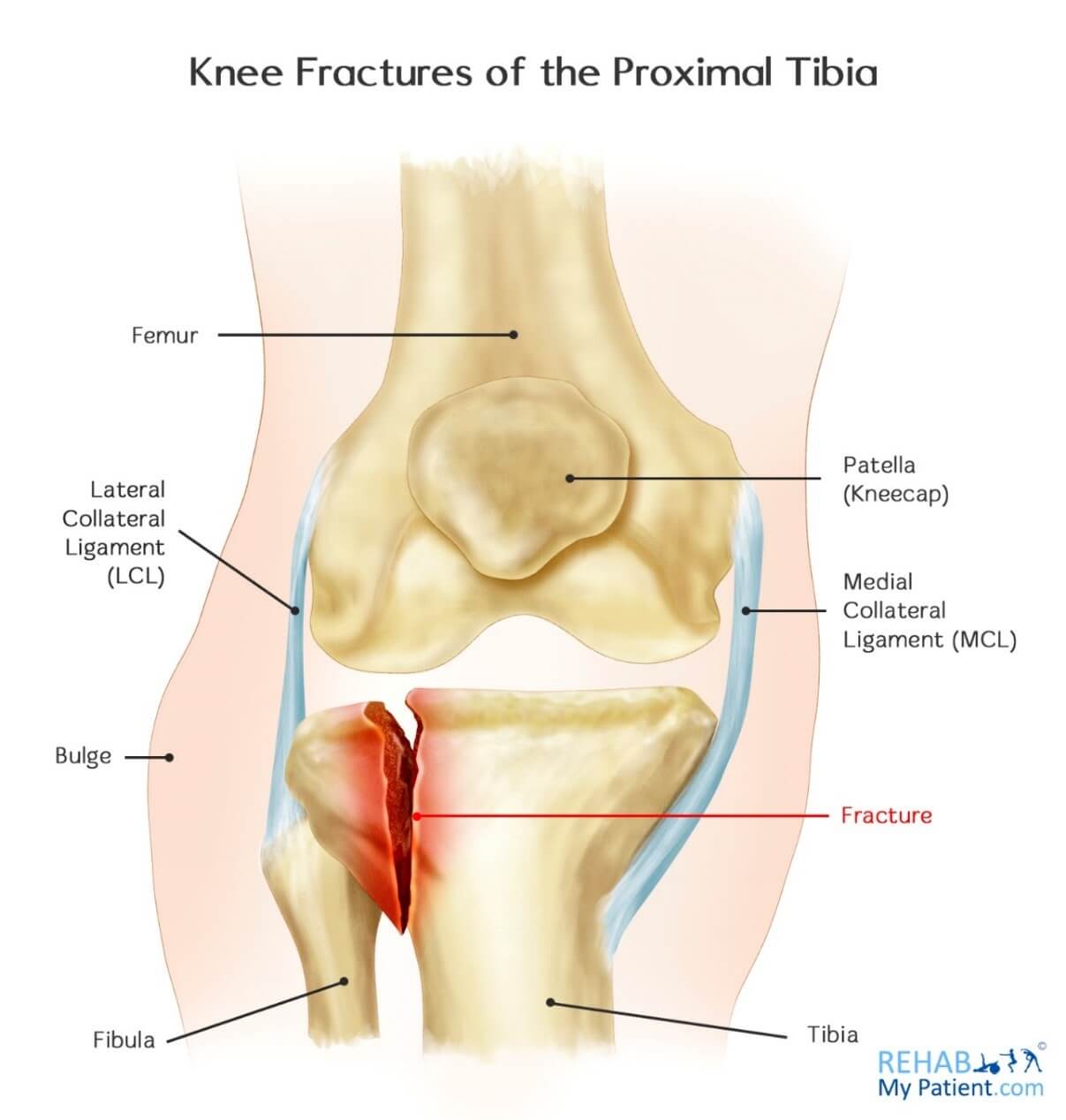
A fracture in the shinbone located just below the knee is referred to as a proximal tibia fracture. The proximal tibia is the upper part of the bone where it widens to help with the formation of the knee joint. Beyond the broken bone, soft tissues might also be injured when the fracture occurs. Both the soft tissue injuries and the broken bone have to be treated at the same time. In a number of cases, surgery is needed to restore motion, strength and stability to the leg and minimize the risk of arthritis forming.
Knee Fractures of the Proximal Tibia Anatomy
The knee joint forms where the femur (thigh bone) meets the shin bone (tibia). There is also two small joints formed by the patella (knee cap) and the fibula (side-shin bone). The top of the tibia is called the tibial plateau, and the bottom of the femur is called the femoral plateau. There are two condyles each side, and this is where the fracture tends to occur.

How to Treat Knee Fractures of the Proximal Tibia:
- External Fixation
If the soft tissues surrounding the fracture are severely damaged, or it is going to take time before you are able to tolerate an extensive procedure due to health reasons, you might need a temporary external fixator. In this situation, screws or metal pins are inserted into the thighbone and the shinbone. The screws and pins are affixed to a bar on the outside of the skin. The device works to hold the bones in the proper position until you are ready for surgery.
- Internal Fixation
For this particular procedure, the bone fragments are repositioned into their normal position. Special devices work to hold them together. In cases where the upper ¼ of the tibia is broken, but the joint wasn’t injured, a plate or rod might be used for stabilizing the fracture.
Screws and plates are often used on fractures entering the joint. If the fracture winds up entering the joint and pushing the bone down, it might be necessary to lift the bone fragments to restore function in the joint. Lifting the fragments often creates a hole in the bone, which has to be filled with a material to prevent the bone from collapsing.
Tips:
- To avoid any problems with the leg, it is important that you follow the instructions of your provider for putting weight on the leg.
- Full weight bearing should be avoided until such time as healing has occurred. Instead partial weight bearing can occur with crutches, but you should seek advice from the surgeon as to how much weight can be placed through the leg.
- If the bone is fractured, you might need longer to heal, which means longer before you are allowed to participate in motion activities.
- Follow the directions of your provider in relation to when you are able to begin moving your knee to prevent any joint stiffness.
- When you are allowed to place weight on the leg, bear in mind that it will often feel unsteady, weak and stiff.
- Do knee exercises to maintain joint mobility and prevent knee stiffness. Knee flexion exercises are usually the best, but your therapist will guide you.
Sign Up
Sign up for your free trial now!
Get started with Rehab My Patient today and revolutionize your exercise prescription process for effective rehabilitation.
Start Your 14-Day Free Trial